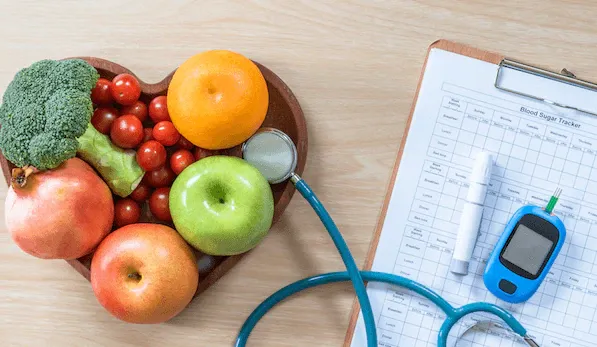BLOG

By Tara Conway
•
May 12, 2022
Good eating habits begin early in your child’s life. As early as infancy, you can help your child grow lifelong healthy eating habits. You are your child’s best role model so while you help her to eat healthy, try to do the same too! Healthy Feeding and Eating For Your Infant It is important to breastfeed for at least 6 months. She will be more likely to have a healthy weight as she gets older. Put breast milk or formula, not cereal, in your baby’s bottle. Cereal adds extra calories that she doesn’t need. Try to wait until your baby is around 6 months to start healthy solid foods like pureed vegetables, jarred baby foods, and infant cereals. Starting solid foods too early can lead to problems with overweight and obesity later. Around 8 or 9 months try offering your baby small amounts of healthy finger foods like grilled chicken, cooked carrots, and cut up strawberries. This will help your baby learn to eat healthy. Breast milk, formula, and water are the best drink choices for your baby. Soda pop, 100% fruit juice, and sport drinks add extra calories to her diet and can harm her new teeth. For Your Toddler Offer your toddler healthy snacks like small cubes of cheese, sliced banana, or whole grain crackers two to three times per day. This will help him stay full in between meals and reduce hunger-related temper tantrums. Try to be patient with picky eaters. He may need to try a food 10 to 15 times over several months before he will eat it. Try giving your toddler a choice between two healthy options. He will be more likely to eat healthy food if he picks it out. Milk and water are the healthiest drink choices for your toddler. Soda pop, 100% fruit juice, and sport drinks add extra calories to his diet and can harm his teeth. For Your Preschooler Let your child help you in making healthy meals and snacks. She will be more likely to try healthy foods if she helps out. Try to keep your kitchen stocked with simple, healthy snacks like carrots, sliced apples and peanut butter, or string cheese. This will help you and your preschooler eat healthy, even on busy days. Milk and water are the healthiest drink choices for your preschooler. Soda pop, 100% fruit juice, and sport drinks add extra calories to her diet and can harm her teeth. For Yourself and Family Your child is learning healthy habits by watching you. Try to eat healthy too. S et playtime, mealtime, and bedtime routines to make day-to-day life less stressful. Talk with your child’s doctor, Head Start staff, and other parents to get healthy eating tips

By Tara Conway
•
March 12, 2022
Offer your support Managing diabetes is not easy, whether a person has just been diagnosed or has been living with diabetes for many years. Family support can help a person with diabetes manage everyday tasks and deal with changes in care over time. But if you live far away from your loved one with diabetes, you may worry about how you can help. Being prepared with the right information can help you provide support, even from a distance. This short guide offers tips that can help. Learn about diabetes. Learning about diabetes can help you understand what your family member is going through, find ways to help them prevent emergencies, and manage their health care. It can also make talking with your family member’s doctor easier. Here are some tips: Learn as much as you can about your loved one’s diabetes medicines, supplies, and equipment, including their blood sugar monitor and test strips. Go to Living with Diabetes to learn more about managing diabetes. See Resources for Everyone section for other ideas. Ask your loved one to teach you about how they are managing their diabetes and what kinds of support they may need. For example: Do they just need someone to check on them now and then? Do they need someone to take them to appointments or help make medical and financial decisions? Remember—it’s their health, so it’s up to them how much they want to share with you. Let them know that you’re there to support them if they need you. Gather information and keep in one place. Gather important information about your loved one’s health care, and keep it up to date. Put it in a place that is easy for your loved one or a caregiver to find. Keep copies for yourself. Here are the kinds of information you should collect: With your loved one’s consent, make sure that at least one family member or close friend gets written permission to receive medical and financial information from the doctor or hospital. Choose one person to talk with all health care providers, if possible. Write down the following medical information: Names and phone numbers of your loved one’s care team. Names and doses of your loved one’s medicines. Names and phone numbers of emergency contacts. Make sure your loved one or a caregiver knows how to contact you (or an emergency contact) in an emergency—but tell them to call 911 first. Create a list of resources in your loved one’s community (see the Resources for Everyone section for ideas). This list can include information about: Social support: Check with your loved one’s health care provider for support groups, social services, and other resources in the community. Financial support: Look for community discount programs for medicines, blood sugar monitors, diabetes education, nutrition assessment, and counseling. Practical support: Ask your loved one’s health care providers or diabetes care and education specialist if there is someone who can help them get supplies and learn to use equipment, if needed. Caregivers can also learn to use equipment. Find resources. Different kinds of organizations can help with different kinds of resources—like meal planning, diabetes care, diabetes camps for children, housekeeping, or emotional support. Here are some places to go for help: Local diabetes groups, senior centers, faith communities, and other community groups that provide support services. Your loved one’s health care provider may have a list of local services. You can also check the Resources for Everyone section for ideas. Local pharmacies. Many pharmacies offer individual and group counseling. Your loved one’s health insurance company or Medicare. Ask what diabetes education and support services are covered. For example, Medicare Part B covers a wide range of diabetes education and training. State health and social services. Look for information on the state government website where your loved one lives. Ask about community programs for children, seniors, and people with disabilities. Your loved one may need a referral from a health care provider to get services from some organizations. You can help them work with their doctors to get what they need. Remind your loved one that asking for a referral to a diabetes self-management education and support (DSMES) program might be helpful. To find a DSMES program recognized by the American Diabetes Association or accredited by the Association of Diabetes Care & Education Specialists, go to the Find a Diabetes Education Program in Your Area Plan Your Visits When you visit your loved one, you may worry that you don’t have enough time to do everything you want to. Talk with your loved one ahead of time about the kind of help they may need. You may feel less stressed if you can focus on a few important errands or chores during your visit. Research your company’s leave policies. Some companies allow sick leave to be used to care for a relative. Remember that your loved one may need help with things like home cleaning and repairs, shopping, or other tasks that are not directly related to their health. Check with your loved one or a caregiver to learn what medical care they may need. This information will help you set clear, realistic goals for your visit. For example: Do they need to see specialists, such as a foot doctor (podiatrist) or eye doctor (optometrist or ophthalmologist)? Do they need more testing supplies? Try to make time to do things that are fun and relaxing with your loved one. Suggest taking a walk together. Offer to play a game of cards or a board game. Stay in touch. From time to time, ask your loved one how they are coping with their diabetes and how you can help. With your loved one’s permission, try to find people in the community—like other family members, friends, or neighbors—who can visit and provide support if needed. Check in regularly with the people who are providing care to your loved one. Find out how they are coping and how you can help them.

